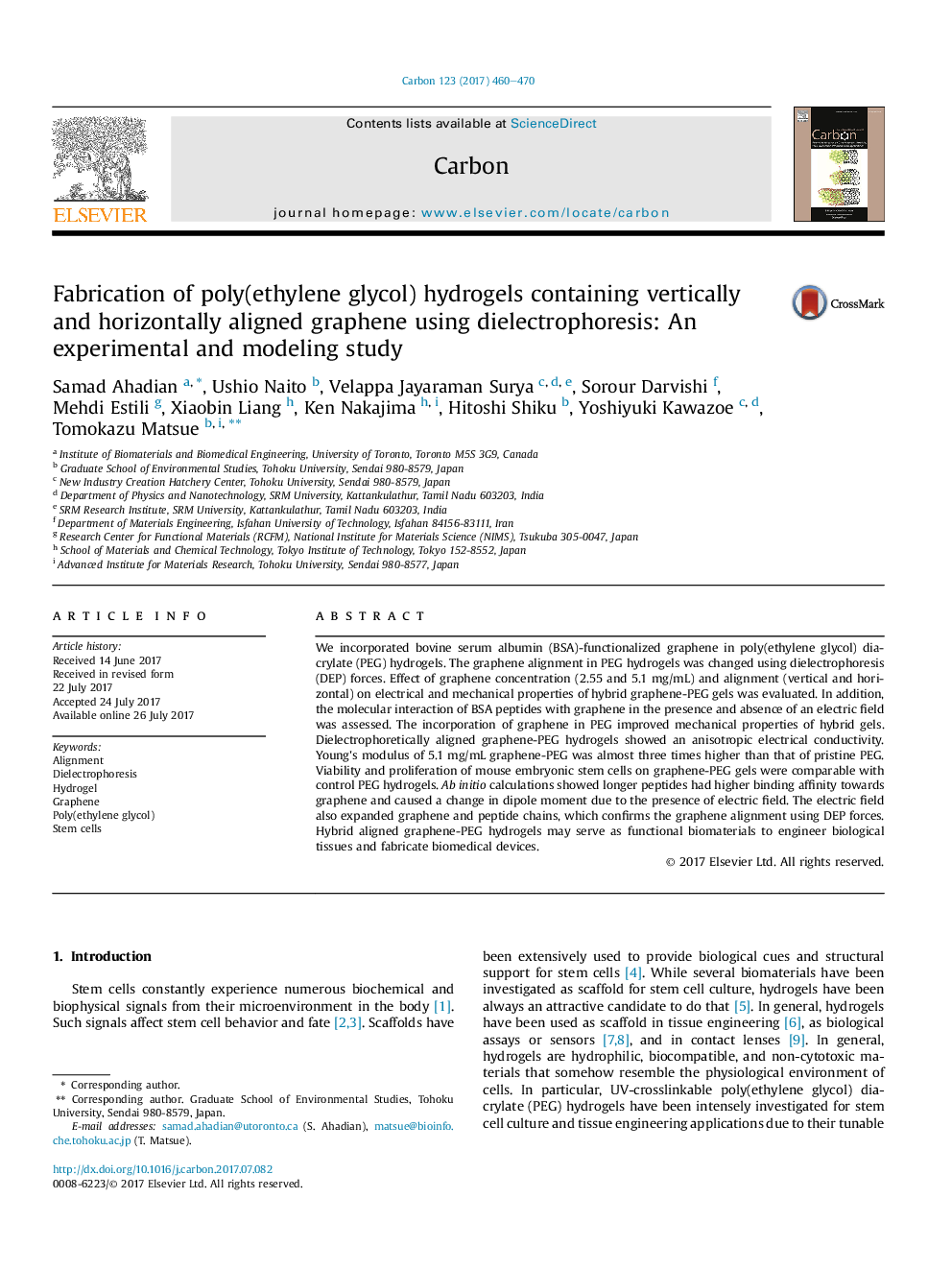| Article ID | Journal | Published Year | Pages | File Type |
|---|---|---|---|---|
| 5431578 | Carbon | 2017 | 11 Pages |
We incorporated bovine serum albumin (BSA)-functionalized graphene in poly(ethylene glycol) diacrylate (PEG) hydrogels. The graphene alignment in PEG hydrogels was changed using dielectrophoresis (DEP) forces. Effect of graphene concentration (2.55 and 5.1Â mg/mL) and alignment (vertical and horizontal) on electrical and mechanical properties of hybrid graphene-PEG gels was evaluated. In addition, the molecular interaction of BSA peptides with graphene in the presence and absence of an electric field was assessed. The incorporation of graphene in PEG improved mechanical properties of hybrid gels. Dielectrophoretically aligned graphene-PEG hydrogels showed an anisotropic electrical conductivity. Young's modulus of 5.1Â mg/mL graphene-PEG was almost three times higher than that of pristine PEG. Viability and proliferation of mouse embryonic stem cells on graphene-PEG gels were comparable with control PEG hydrogels. Ab initio calculations showed longer peptides had higher binding affinity towards graphene and caused a change in dipole moment due to the presence of electric field. The electric field also expanded graphene and peptide chains, which confirms the graphene alignment using DEP forces. Hybrid aligned graphene-PEG hydrogels may serve as functional biomaterials to engineer biological tissues and fabricate biomedical devices.
Graphical abstractDownload high-res image (255KB)Download full-size image
